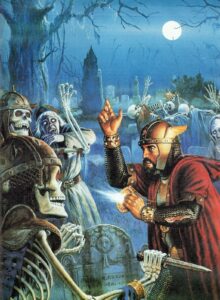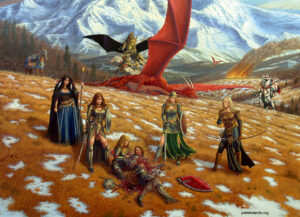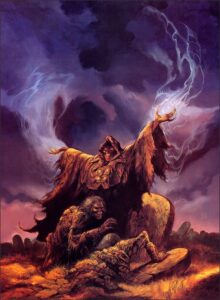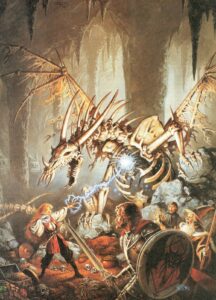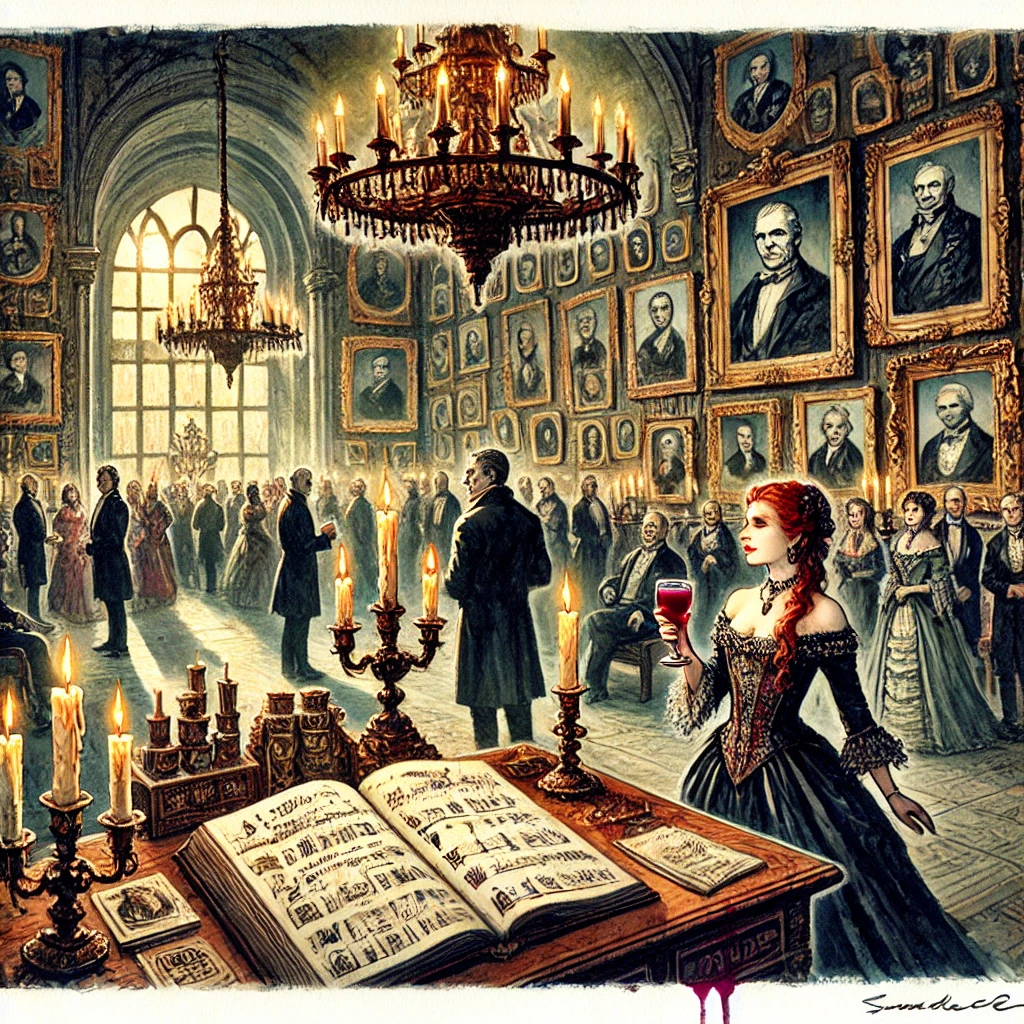
Long before magical sending stones and crystal ball networks, vampire lords perfected the art of supernatural social networking. Their guest lists represent intricate webs of power spanning multiple planes of existence, making modern diplomatic circles look like tavern gatherings in comparison. These immortal socialites don't just maintain contact with mortals -- they curate relationships with everything from ancient dragon clans to demon princes, while keeping tabs on bloodlines blessed by the gods or cursed by ancient magic.
For vampires in fantasy realms, social networking transcends mere mortal connections. They maintain relationships not just with noble families, but with entire magical lineages. A vampire might have advised an archmage's great-grandmother during her first summoning, attended her grandfather's graduation from the Celestial Academy of Arts, and "coincidentally" saved her mother from a rogue demon -- all while gathering leverage over each generation's magical achievements. These long-term connections provide access to magical knowledge, political influence, and carefully cultivated bloodlines with innate magical abilities.
The practical applications of this supernatural networking are mind-boggling. A vampire might maintain friendly relations with a family of dwarven runesmiths for centuries, ensuring they always have access to magical wards and enhanced weapons. Another might cultivate connections with elven bloodlines known for producing powerful spellcasters, tracking their marriages and magical potential like a gardener breeding prize roses. Some vampires even maintain lists of families touched by divine or infernal power, watching for signs of sorcerous blood manifesting in each new generation.
These social networks serve as both feeding grounds and magical resources. A vampire with centuries of connections can call upon favors from dozens of influential beings, each owing their position to the vampire's subtle manipulation. Need a high priest to look the other way? Perhaps the vampire helped his predecessor escape an angry mob of cultists. Want access to a restricted section of the Arcane Library? The vampire might have contributed rare spellbooks to the collection centuries ago, earning permanent guest privileges.
Managing these supernatural connections requires incredible skill and magical support. Vampires employ complex memory enhancement rituals to track their vast networks of relationships, often maintaining magical ledgers that update themselves as alliances shift and debts are repaid. Some create elaborate magical portraits that show the true nature of their associates, revealing everything from divine blessing to fiendish pacts. Others maintain collections of symbolic objects -- locks of hair, personal trinkets, or magical essences -- that allow them to monitor their connections from afar.
The most fascinating aspects of vampire social networks involve their dealings with immortal or extraordinarily long-lived beings. Vampires often forge complex relationships with dragon clans, making bargains that span centuries and involve elaborate exchanges of knowledge, treasure, and magical favors. They might maintain delicate diplomatic relations with elf kingdoms, participating in centuries-long political games where a single move might take decades to play out. Some particularly ambitious vampires even attempt to cultivate connections with angels or demons, though such relationships require incredible finesse to maintain without risking final death.
These networks often intersect with various planes of existence. A well-connected vampire might maintain regular correspondence with noble efreet from the Plane of Fire, trade information with mysterious entities from the Shadowfell, or even hold debts owed by archfey from the Feywild. These extraplanar connections often require elaborate magical precautions -- specially enchanted receiving rooms warded against particular types of magic, ritual spaces designed to safely host beings of pure chaos, or magical contracts that prevent betrayal across dimensional boundaries.
Magical communication methods play a crucial role in maintaining these networks. Vampires often possess collections of enhanced sending stones, scrying mirrors, or more exotic communication devices. Some maintain networks of bound spirits who serve as messengers, while others might use enchanted objects that allow secure communication between trusted associates. The most powerful vampires might even maintain permanent telepathic links with key allies, though such connections require careful magical shielding to prevent unwanted information transfer.
The competition between vampire social networks can spawn centuries-long magical conflicts. Vampires might spend decades carefully corrupting a family's divine bloodline, or work to arrange marriages between magical lineages to create potentially powerful offspring. These machinations often involve subtle magical influence, carefully worded prophecies, or the manipulation of seemingly chance encounters blessed or cursed by supernatural forces. A single series of introductions at a noble's ball might be the culmination of a century's worth of careful planning and magical manipulation.
For gaming purposes, these social networks provide rich opportunities for DMs and players alike. Each connection in a vampire's network could spawn multiple adventure hooks -- retrieving a magical item promised to a dragon ally, protecting a gifted young sorcerer from rival vampires, or investigating why a usually reliable magical bloodline suddenly stopped producing spellcasters. The networks can also serve as sources of information, magical support, or political leverage for high-level parties who manage to either ally with or blackmail their vampire curators.
The magical security protecting these networks is often as elaborate as that guarding physical treasures. Vampires employ complex spells to protect their social information -- magical ledgers that appear blank to unauthorized readers, portraits that show different faces to different viewers, or enchanted guest lists that update themselves to track the true identities of shapeshifters and doppelgangers. Some vampires create magical simulacra of themselves specifically for hosting social gatherings, allowing them to interact with potentially dangerous guests without risk to their actual person.
Perhaps most intriguing is how these networks interface with divine and infernal powers. Vampires often maintain connections with various religious organizations, carefully balancing relationships with different faiths to avoid drawing too much divine attention. Some particularly bold vampires might even maintain contacts within paladin orders or monk monasteries, usually through complicated arrangements of mutual benefit that skirt the edges of their holy vows. These religious connections often require elaborate magical precautions, as prolonged exposure to holy energy can be dangerous for the undead.
The management of these networks also involves careful attention to magical bloodlines and inherited abilities. Vampires often maintain detailed records of how magical talents manifest in different families -- which bloodlines consistently produce skilled necromancers, which tend toward wild magic sorcery, or which carry the potential for divine spellcasting. These records might include magical genealogies that update themselves, enchanted portraits that reveal magical potential, or crystals that resonate with particular types of inherited power.
In many fantasy settings, vampire social networks serve as shadow governments, their influence reaching into every major magical institution and noble court. A single vampire's web of connections might include arch-mages from multiple magical colleges, high priests from competing temples, noble families from several kingdoms, and supernatural entities from multiple planes of existence. These networks often become so complex that vampires must employ magical means just to track all their connections -- enchanted maps that show the movements of key allies, magical directories that update themselves as allegiances shift, or spectral advisors who help manage day-to-day social obligations.
The role of charmed or dominated servants adds another layer to these networks. While vampires can magically compel obedience, most prefer to maintain genuine relationships with their mortal agents, using their charm abilities sparingly to avoid creating unstable networks of resentful thralls. Instead, they often employ a combination of magical incentives, genuine rewards, and carefully cultivated loyalty to maintain their influence. Some vampires maintain special sanctuaries for their most valued agents, creating magical safe houses where trusted servants can live in luxury while being protected from rival undead.
For adventuring parties, understanding a vampire's social network can be as crucial as knowing their combat abilities. A vampire's true power often lies not in their personal strength, but in their ability to call upon centuries of accumulated favors and obligations. A party fighting a vampire might find themselves simultaneously dealing with magically-bound demons, allied dragons, and hired assassins from multiple planes of existence. Smart players learn to investigate a vampire's connections before confronting them directly, as severing key social ties might be more effective than attempting to defeat the vampire in direct combat.
These social networks also play crucial roles in vampire politics. The most powerful vampires often maintain their position not through personal might, but through their ability to leverage complex webs of allies and servants. A vampire's status might be measured by the magical potency of their connections -- how many arch-mages they can call upon, which dragon clans owe them favors, or how many planar entities they can summon to their aid. These political considerations often lead to elaborate magical contracts and agreements, with vampire lords using complex enchantments to bind their allies and enemies alike in webs of magical obligation.



